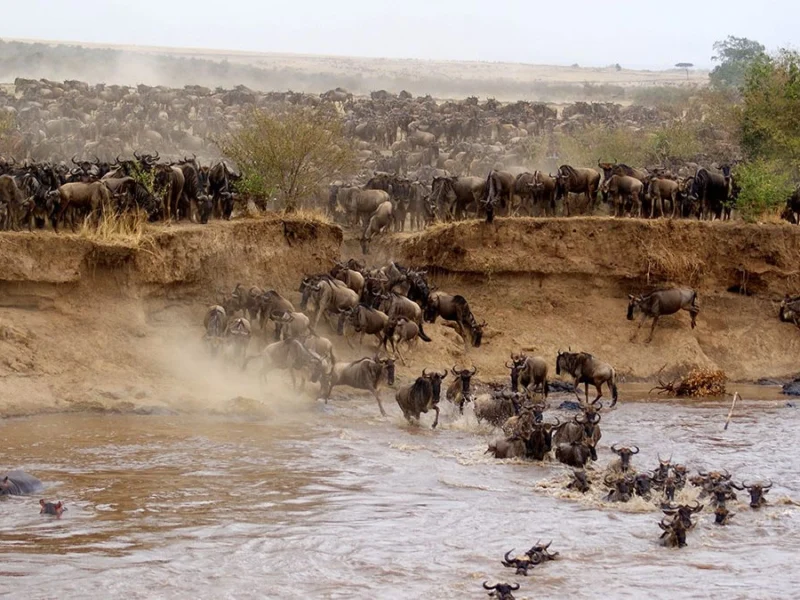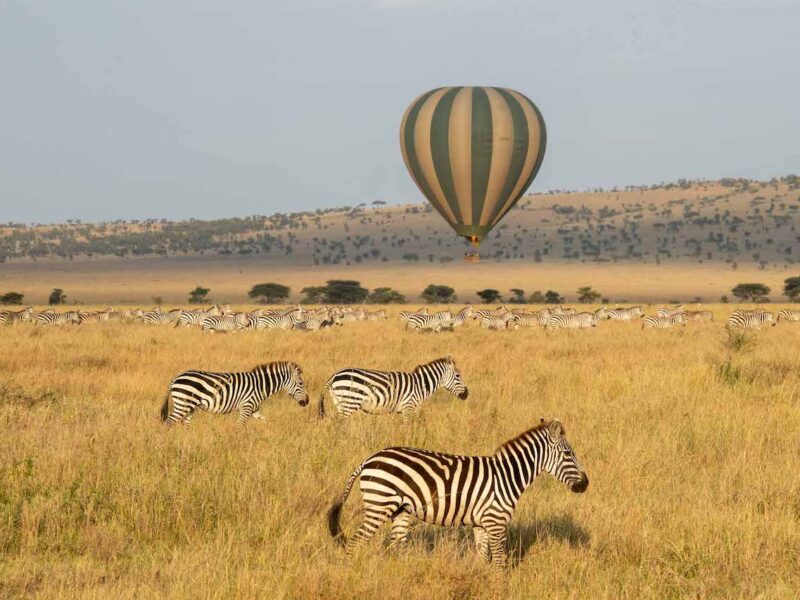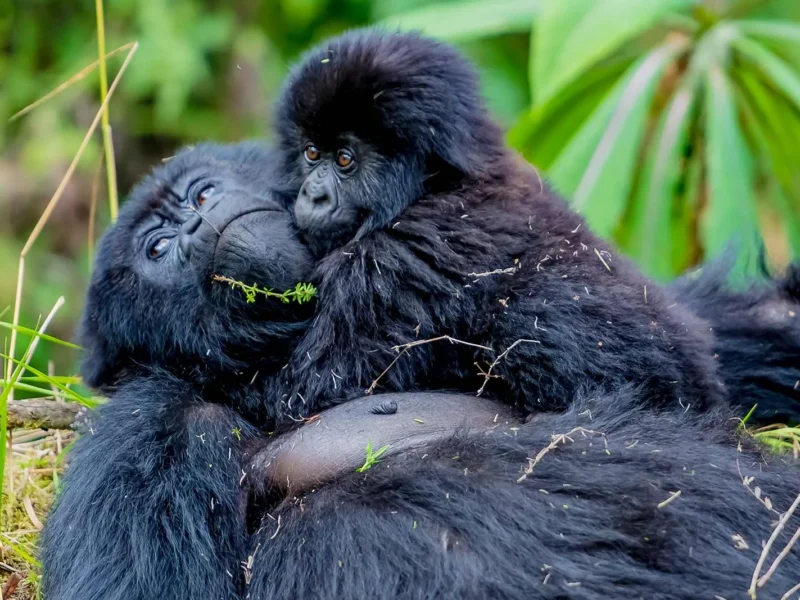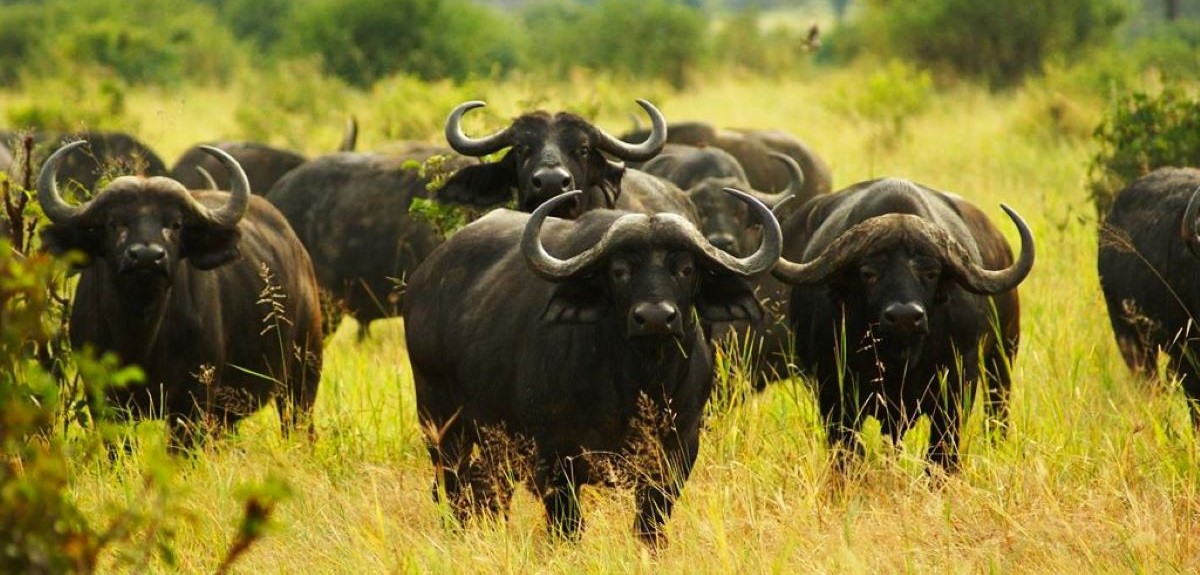
African Buffalos In Tanzania
April 11, 2025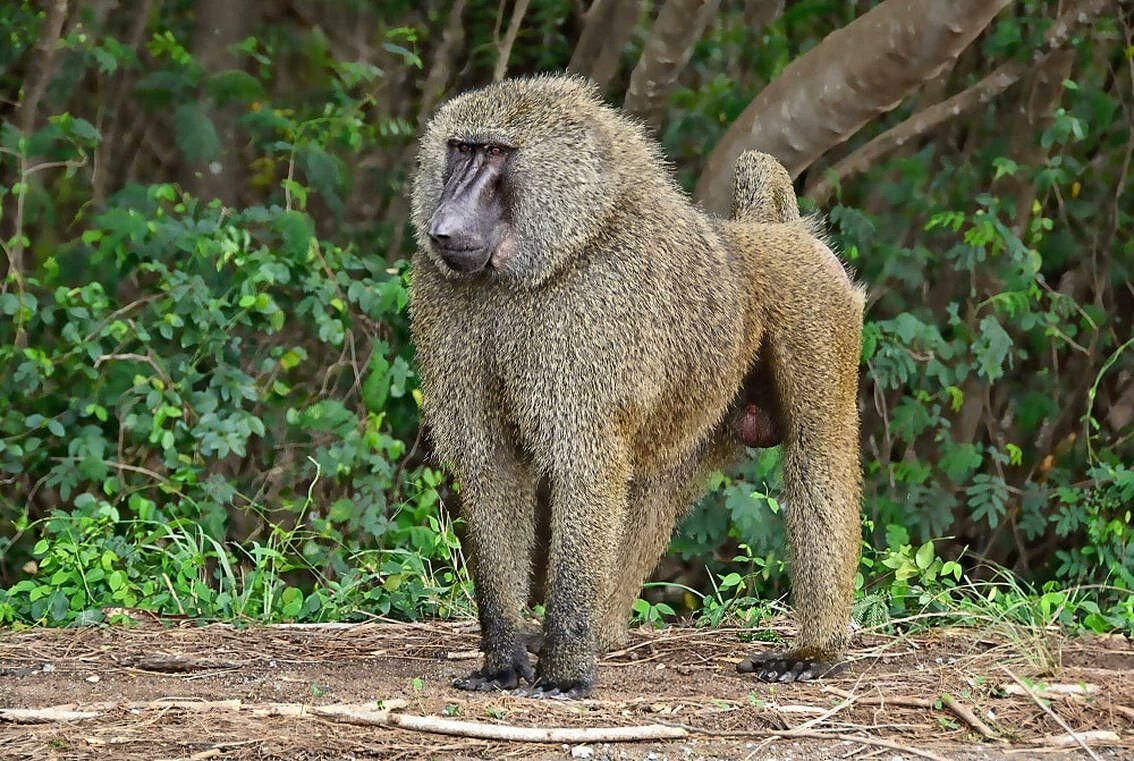
Ugandan Baboon
April 11, 2025Ruaha National Park
Location:
– Region: Central Tanzania, within the southern safari circuit.
– Geography: Situated in the Great Rift Valley, it is the largest national park in southern Tanzania and the second-largest in the country after Serengeti.
Size:
– Area: Approximately 20,226 square kilometers (7,809 square miles), making it one of the largest parks in Tanzania.
Established:
– Year: 1964, initially as a game reserve and later established as a national park.
Accessibility:
– By Air: Accessible via flights from Dar es Salaam or Iringa to airstrips within the park.
– By Road: Reachable by road, although some areas are remote and can be challenging to access during the rainy season. History of Ruaha National Park
History And Heritage
Ruaha National Park, one of Tanzania’s largest and most ecologically significant protected areas, has a rich history rooted in conservation, traditional culture, and natural evolution. Its transformation from a hunting ground to a thriving national park reflects the broader development of wildlife preservation in Tanzania.
1. Origins and Early Inhabitants
Long before Ruaha was established as a park, the region was home to various indigenous communities, including the Hehe, Gogo, and Sangu people. These groups lived in harmony with nature, relying on the land for hunting, gathering, and small-scale farming. They had a deep understanding of local wildlife and plants, some of which were used for medicinal and spiritual purposes.
The area around present-day Ruaha also served as part of important trade routes, particularly during the 18th and 19th centuries, connecting inland communities with coastal trading centers.
2. German and British Colonial Influence
During the late 19th century, Tanzania (then known as German East Africa) came under German colonial rule. The colonial administration began to take an interest in preserving natural areas, partly for hunting reserves and partly due to growing global awareness about the need to protect African wildlife.
After World War I, Tanzania came under British rule, and conservation efforts became more formalized. The British administration expanded the concept of game reserves to regulate hunting and protect declining wildlife populations.
3. Creation of Rungwa Game Reserve
In 1910, under the German administration, the Rungwa Game Reserve was established, covering a large area in central Tanzania. This marked one of the earliest steps in protecting wildlife in the region that would later include Ruaha.
Later, the southern portion of the Rungwa Reserve was separated to create the Saba Game Reserve, which included the area surrounding the Great Ruaha River.
4. Establishment of Ruaha National Park
In 1964, just three years after Tanzania gained independence, the southern portion of the Saba Game Reserve was officially designated as Ruaha National Park. This was part of a broader effort by the newly independent Tanzanian government to preserve the country’s natural resources and promote eco-tourism.
The name “Ruaha” comes from the Great Ruaha River, which runs through the park and serves as its lifeline. The river’s name is derived from the Hehe word “Ruvaha,” meaning “river.”
5. Expansion of the Park
In 2008, Ruaha National Park was significantly expanded, incorporating the adjacent Usangu Game Reserve and wetlands. This expansion increased the park’s area to over 20,000 square kilometers, making it one of the largest national parks in East Africa.
The Usangu Basin, now part of Ruaha, is a crucial wetland ecosystem that supports both wildlife and local communities. Its integration into the park helped protect vital water sources and control human-wildlife conflict in the area.
6. Conservation and Research Efforts
In recent decades, Ruaha has become a focus for conservation and scientific research. Several NGOs and research groups operate within the park, including the Ruaha Carnivore Project, which monitors and protects large predators like lions, leopards, and African wild dogs.
The park also plays a key role in elephant conservation, as it harbors one of the largest populations in East Africa. These efforts aim to mitigate threats like poaching, habitat loss, and climate change.
7. Tourism Development
Ruaha’s remote location kept it off the typical tourist route for many years. However, over time, it gained recognition for its raw, untouched wilderness and has become a popular destination for travelers seeking a more authentic and uncrowded safari experience.
Small-scale, eco-friendly lodges and camps have been developed within and around the park, balancing tourism with environmental preservation.
The history of Ruaha National Park reflects Tanzania’s evolving relationship with its natural environment—from traditional land use by local tribes to colonial game reserves, and finally to a modern national park focused on conservation and eco-tourism. Today, Ruaha stands as a symbol of successful habitat preservation, a vital sanctuary for endangered species, and a key contributor to Tanzania’s natural and cultural heritage.
Would you like to explore the cultural history of the communities around Ruaha or learn more about its conservation projects?
Wildlife in Ruaha National Park
Ruaha National Park is one of the most biodiverse and wildlife-rich parks in Tanzania, offering an incredible variety of animal species in a landscape that remains largely untouched and wild. Located in central Tanzania, the park spans over 20,000 square kilometers and forms part of the vast Rungwa-Ruaha ecosystem. It is known for its high concentration of large mammals, diverse birdlife, and a unique mix of both eastern and southern African species.
Mammals in Ruaha
Ruaha is especially famous for its large populations of elephants and lions, but it is home to more than 80 species of mammals, many of which are rarely seen in other parts of Tanzania.
1. Elephants
– Ruaha is considered to have one of the largest elephant populations in East Africa.
– During the dry season, herds of elephants gather in large numbers around the Great Ruaha River and other water sources.
– These herds can often be seen drinking, bathing, and socializing, offering visitors remarkable viewing opportunities.
2. Lions
– The park is home to one of the largest lion populations in Africa.
– Lions in Ruaha are often seen in large prides, especially during the dry season when prey is more concentrated.
– They are a focal species for conservation research, including the Ruaha Carnivore Project.
3. African Wild Dogs
– Ruaha is one of the few strongholds for the endangered African wild dog (painted wolf).
– These highly social and intelligent predators live in packs and are known for their cooperative hunting behavior.
4. Leopards and Cheetahs
– Leopards are common in the dense riverine vegetation and are known for their elusive, solitary nature.
– Cheetahs, though less frequently seen, are found in the open plains where they use their speed to hunt.
5. Other Carnivores
– Spotted hyenas, striped hyenas, jackals, genets, civets, and mongoose species also inhabit the park.
– Servals and caracals can occasionally be spotted in grassy or woodland areas.
6. Herbivores
– The park supports a wide range of herbivores, including:
– Buffaloes – Often found in large herds and a favorite prey of lions.
– Giraffes – Commonly seen browsing on acacia trees.
– Zebras and wildebeests – Grazing species found in open savannahs.
– Antelopes – Including greater kudu (a symbol of the park), lesser kudu, eland, roan, sable antelope, impala, and waterbuck.
Birdlife in Ruaha
Ruaha is a paradise for birdwatchers, with over 570 recorded bird species. Its location at the meeting point of East African and Southern African avifauna zones means that it hosts species from both regions.
Notable Birds Include:
– Fish eagles
– Bateleurs
– Lilac-breasted rollers
– Yellow-collared lovebirds (endemic to the Ruaha region)
– Hornbills, kingfishers, bee-eaters
– Storks, herons, and egrets near wetlands and rivers
– Ostriches, guineafowl, and francolins on the drier plains
The best birdwatching is during the wet season (November to April), when migratory birds from Europe and northern Africa visit the park.
Reptiles and Amphibians
The diverse habitats of Ruaha also support a variety of reptiles and amphibians:
– Crocodiles and hippopotamuses are common along the Great Ruaha River.
– Various species of snakes, lizards, and tortoises are present throughout the park.
– Frogs and toads become more active during the rainy season, contributing to the chorus of sounds in the bush.
Insects and Other Creatures
Ruaha is teeming with life, including:
– Butterflies, especially during and after the rainy season.
– Dung beetles, ants, and other insects that play essential ecological roles.
– Termite mounds, which dot the landscape and serve as habitats for a variety of animals, including mongooses and snakes.
Wildlife Behavior by Season
– Dry Season (June to October):
– Wildlife congregates around remaining water sources like the Ruaha River.
– Easier to spot animals due to thinner vegetation.
– Ideal time for predator sightings.
– Wet Season (November to April):
– Lush green landscapes, active birdlife, and the birth of many animal species.
– More difficult to spot large mammals due to thick vegetation, but a fantastic time for birdwatching and scenery.
Accommodation Options in Ruaha National Park
Ruaha National Park is a biodiversity hotspot, home to an extraordinary variety of animals and birds. Its remote setting, unspoiled habitats, and large mammal populations make it a unique destination for wildlife lovers, photographers, and researchers. Whether you’re interested in watching elephants at a riverbank, tracking lions on a game drive, or spotting a rare bird, Ruaha delivers a rich and unforgettable wildlife experience.
Would you like a wildlife checklist or specific details about any species in Ruaha?
Ruaha National Park, located in central Tanzania, offers a range of accommodations that blend seamlessly with its natural surroundings. From luxury lodges with panoramic views to tented camps offering immersive safari experiences, visitors can choose lodging that best suits their preferences.
Luxury Accommodations
1. Jabali Ridge
Location: Situated in the northern sector of Ruaha National Park, Jabali Ridge is set on a rocky kopje overlooking the expansive baobab forest and the Mwagusi River.
– Facilities:
– Rooms: Eight spacious suites with private verandas, en-suite bathrooms, and outdoor lounges.
– Amenities: Infinity pool, spa, and Wi-Fi access.
– Activities: Day and night game drives, walking safaris, and fly camping.
– Highlights: The lodge’s design offers panoramic views of the park’s diverse landscapes, providing guests with a luxurious and immersive nature experience.
2. Ikuka Safari Camp
Location: Perched on the edge of the Mwagusi escarpment, Ikuka Safari Camp offers sweeping views across the Ruaha valley.
– Facilities:
– Rooms: Six luxury tented rooms with private balconies, en-suite bathrooms, and comfortable lounges.
– Amenities: Main area includes a lounge, dining space, library, bar, and a swimming pool.
– Activities: Guided game drives and walking safaris.
Highlights: The camp’s elevated position provides guests with unparalleled vistas of Ruaha’s wilderness, combining luxury with an authentic safari atmosphere.
Mid-Range Accommodations
1. Ruaha River Lodge
Location: Located along the banks of the Great Ruaha River, this lodge offers proximity to abundant wildlife.
Facilities:
– Rooms: 24 stone chalets with verandas overlooking the river, featuring en-suite bathrooms with solar-heated showers.
– Amenities: Restaurant, bar, and a lounge area.
– Activities: Game drives, walking safaris, and fly camping.
Highlights: The lodge’s riverside setting allows guests to observe wildlife from their verandas, providing a tranquil and immersive experience.
2. Mwagusi Safari Camp
Location: Nestled along the banks of the Mwagusi Sand River, Mwagusi Safari Camp offers an intimate safari experience.
Facilities:
– Rooms: Comfortable tented rooms with en-suite bathrooms, shaded by thatched roofs.
– Amenities: Main area includes a lounge, dining space, and a swimming pool.
– Activities: Game drives and guided walks.
Highlights: The camp’s design and location provide a peaceful retreat, allowing guests to connect deeply with the surrounding wilderness.
Budget-Friendly Accommodations
1. Tandala Tented Camp
Location: Situated just outside the park’s main gate, Tandala Tented Camp offers easy access to Ruaha’s attractions.
Facilities:
– Rooms: Ten spacious tents with en-suite bathrooms, each featuring a private verandah overlooking the Mdweka Sand River.
– Amenities: Restaurant and bar area, with meals prepared by the camp’s chef.
– Activities: Walking safaris, cultural tours, and game drives.
Highlights: The camp’s proximity to the park ensures guests can maximize their wildlife viewing opportunities while enjoying comfortable accommodations.
Additional Accommodation Options
– Jongomero Camp: Located in the southwestern region of the park, Jongomero Camp offers luxury tented accommodations along the Jongomero Sand River. Each tent is equipped with en-suite bathrooms and private verandas, providing a secluded and comfortable retreat.
– Kigelia Ruaha: Situated near the confluence of the Mwagusi and Great Ruaha Rivers, Kigelia Ruaha offers six spacious tents with en-suite facilities. The camp’s location enhances the likelihood of encountering diverse wildlife, including the “Big Five.”
Booking and Reservations
It’s advisable to book accommodations well in advance, especially during peak seasons, to ensure availability. Many lodges offer packages that include guided game drives, meals, and other activities, providing a comprehensive safari experience.
For more detailed information and assistance with bookings, you can visit the official websites of the lodges or consult with reputable safari tour operators.


